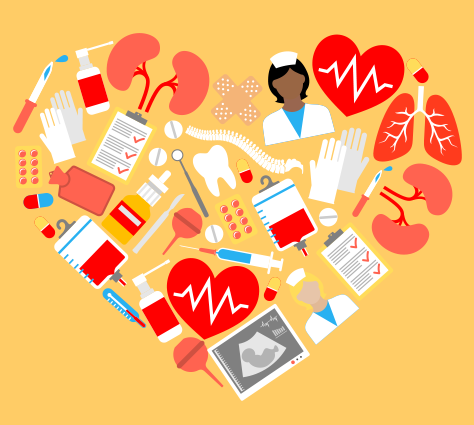Array International Health Foundation

Mission Statement
Our mission is to provide information, counselling and support to anyone, irrespective of sex, ethnicity or religious belief, affected by cancer, people presently or previously suffering from cancer, their families & friends as well as the caregivers; and also to create public awareness on the causes, preventions, importance of early detection and progress made in the treatment of cancer in India and overseas.
Objectives
- Set up a proper documentation unit at our Centre to help people find information on cancer and its different forms of treatment.
- Train volunteers to give moral support to patients in hospitals and throughout the country.
Services
CANCER AWARENESS PROGRAMMES
Cancer is a leading cause of death worldwide. It accounts for 7.4 million deaths (around 13% of all deaths) in 2004. Cancer often creates fear which comes out of ignorance and misconception. More than 30% of cancer cases could be prevented by modifying lifestyle or avoiding key risk factors. About 1/3rd of cancer cases could be reduced if cases are treated and detected at an early stage.
Since 2002, Link to Life has conducted over hundreds of Cancer Awareness Programs which have benefited more than thousands of participants. Link to Life has also participated in many health related exhibitions benefiting more than 2 000 000 participants.
Objectives of the Cancer Awareness and Educational Programs:
- To create awareness of the disease.
- To help people recognize the early signs and symptoms of cancer, thus enabling them to seek treatment at an early stage. The program encourages the participants to seek prompt medical attention for symptoms which may include lumps, sores, bleeding, hoarseness, weight loss and persistent indigestion/cough/pain, etc.
- To educate people about the key risk factors of cancer since more than 30% of cancer cases could be prevented by modifying lifestyle or avoiding the key risk factors.
- To inform people about the importance of cancer check-ups at an early stage.
Achievements of Cancer Awareness and Educational Programs: During 2002 - 2012, many Cancer Awareness Programs were conducted at various places such as schools, banks, colleges, private companies, NGOs and Government organizations. During the programs, information was given about cancer, causes and symptoms of cancer, types of cancer, cancer checkup and its importance, cancer treatment and prevention. During the program, pamphlets related to cancer were distributed among the participants to educate them about cancer.
BREAST CANCER SCREENING
Breast cancer is by far the most frequent cancer among women with an estimated 1.38 million new cancer cases diagnosed in 2008. This represents about 11% of all new cancer cases and 23% of all female cancers. It is predicted that the number of cases will rise to 2.1 million by 2030.
In NCR around 1500 new cases for breast cancer & 350 deaths (breast cancer) every year. Breast self-examination is a simple, painless procedure that women can carry out by themselves at home, to detect any changes occurring in their breast. It has been proven to be an effective early detection technique for breast cancer. Breast self-examination should be performed every month as from the age of puberty.
Women, who regularly do a Breast self-examination, learn to identify how their breasts should feel and are more likely to detect even small changes at an earlier stage. Women themselves discover nearly 95% of all cancerous lumps. 80% of all breast lumps found through Breast self-examination do not turn out to be cancerous.
Doctors are not necessarily as good at finding lumps in a patient's breast as the patient herself. Women who perform Breast self-examination are likely to find lumps as small as ¼ to ½ inch in diameter as opposed to 1 ½ inches in the case of women who do not. This makes a difference of 6 months to a year in the start of treatment, and consequently, in the chances of a favorable outcome.
Breast self-examination should be performed at the same time each month. A good time is just as the menstrual period is ending when the breasts are least sensitive.
Some women may put off breast cancer screenings. They may be afraid of being diagnosed with breast cancer, they might not know they should be screened, they may have a hard time finding the right health care provider, or they may have concerns about the exams. It's important not to let these fears and concerns get in the way of your health.
CERVICAL CANCER SCREENING
Virtually all cervical cancers are associated with human papilloma viruses (HPV). However, the majority of women with HPV do not develop cervical cancer. Women become susceptible to developing cervical cancer following HPV infection, but other environmental factors are required for the cancer to develop.
Who is at risk? :
- Women who were married at an early age.
- Women who have had multiple pregnancies.
- Women with a history of having sexually transmitted disease.
- Women who have multiple sexual partners.
- Women whose partners have had multiple sexual partners or who have had sexually transmitted disease.
- Women from low socioeconomic status (due to poor hygiene).
- Women undergoing treatment involving suppression of the immune system from steroids, other diseases or HIV –
Symptoms :
- Abnormal vaginal bleeding between periods, after intercourse or after menopause
- Persistent white, brown or blood stained, foul smelling vaginal discharge
- Loss of appetite
- Unexplained weight loss
- Involuntary loss of urine
The Cervical Cancer Screening is conducted by a Gynecologist & doctors once or twice a week only on appointment basis. Whenever the Gynecologist or doctors identify any abnormality, she then refers the patient to the hospital. But the patient is also free to see any private medical practitioner for detailed investigation.
